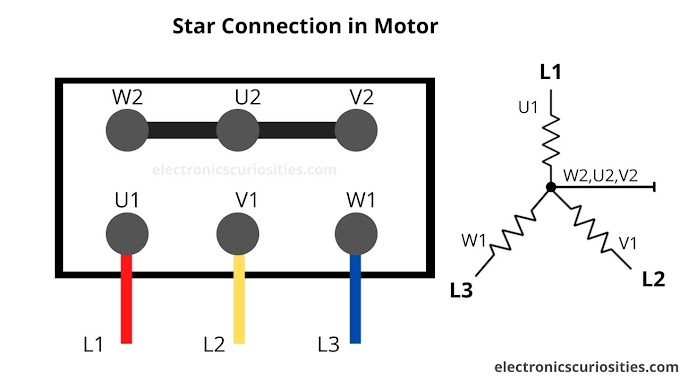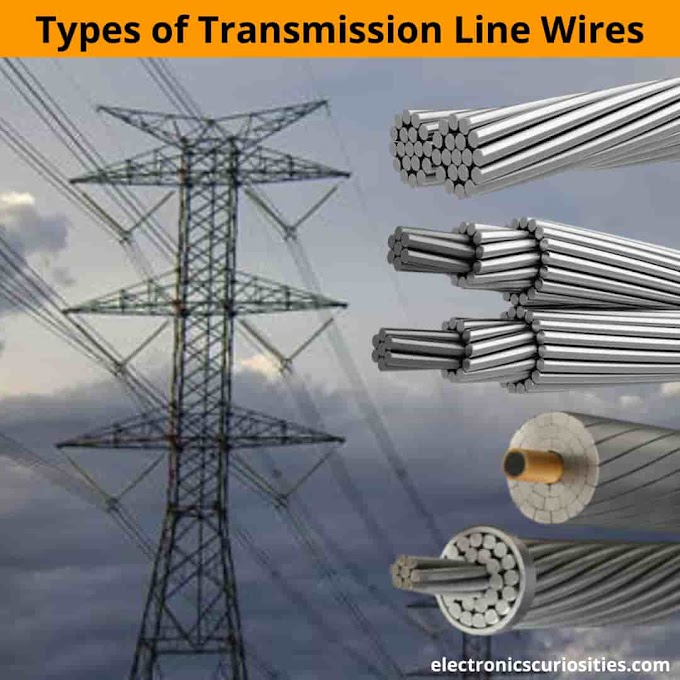Capacitor – Definition- Types of Capacitor
What is a capacitor? How does the capacitor work? How many types of capacitors are there? What is capacitance? The answer to some such questions will be found in this article of Capacitor. I hope this will be helpful for you.
Capacitor Definition
Two metal plates, an insulating material with dielectric strength, and a piece of aluminum foil and paper that store electrical energy, are called capacitors.
Capacitor collects electricity and discharge are done when needed. The charge discharge process is very quick. There is a lot of similarity with a battery with respect to electric charge.
If we have seen the battery, we know it's working. Battery and capacitors have a lot in common. Chemical reactions in the battery result in the accumulation of electric charge and slowly the discharge happens.
The capacitor also stores electricity and according to the need, the discharge happens but the process of its discharge is very fast as compared to the battery.
The two-way method of releasing energy is different. Yet there is a lot of similarities. We will learn about the capacitor here in this article on Capacitor.
There are two metal plates inside the capacitor which connect to the terminal. The two NO plates are separated by insulating material. It is also called dielectric strength. In most capacitors, aluminum foil and a piece of paper are used.
It stores electrical energy in the form of charge. It charges in a very short time and it gets discharged in a very short time.
Considering the application and size of the capacitor, Mica, Ceramic, Cellulose, Porcelain Mylar, and Teflon are also used as insulating materials.
Talking about the application, it is used in both electrical and electronic circuits.
Capacitors are also used from mobile phones to high tension lines.
Nowadays there are many companies manufacturing capacitors in the market. But the quality of the capacitor is determined by its life and at the time of de-rating.
How does the capacitor work?
Voltage is given in both the plates of the capacitor. Then the electric field is generated. The positive charge is collected in one of its plates and the negative charge is collected in the second plate.
Energy is collected in the capacitor, it is called charging and the energy released is called discharging.
The main use of capacitors in industries is for power factor correction. The capacitor panel is connected through a current transformer with the load. In the capacitor panel, there is a relay of APFC (Automatic Power Factor Controller). Which gives the command to the capacitor to work.
Capacitor Types
Ceramic Capacitor
The insulating material used in ceramic capacitors is that of ceramic. There are two main types of capacitors available in this. One multi-layer ceramic capacitor and a second ceramic disc capacitor.
Image result for ceramic capacitor
There are two types of capacitors available in ceramic capacitors according to their quality.
One class-1 and the other class-2
Class-1 capacitors are used in such places where more stability and less loss are required. It was very accurate and the value of Capacitance also remains constant.
Class-2 capacitors are used for low sensitivity. Its thermal stability and operating temperature are less than class-1.
Dielectric Capacitor
This type of capacitor is used in the transmitter, receiver, and transistor radio. Usually, these are capacitor variables. Because it is necessary to change the capacitance in use.
Variable Dialectical capacitors have more plates. In which there was a place for air to go. There are two types of plates fixed and movable.
The position of the moving plate with the fixed plate gives us the value of capacitance. When two no plates are together, then the value of capacitance is highest.
Electrolytic Capacitor
In this type of capacitor, an electrolyte is used. This allows it to be used to get more capacitance than other types of capacitors. The liquid in the electrolyte is either a gel substance. In which the concentration of ions is high.
In electrolyte capacitors, the value of the voltage at the positive terminal is higher than at the negative terminal.
In this type of capacitor, two layers of aluminum foil and a spacer are immersed in the electrolyte. One of the two layer is covered with oxide.
The one which is covered with oxide is the anode. Whereas the one which is not coated acts as a cathode. Under normal circumstances, the anode should have a positive voltage compared to the cathode.
This type of capacitor is used in a computer's motherboard, power supply, domestic types of equipment. Since it is polarized, it is done in a DC circuit.
Silver Mica Capacitor
In this type of capacitor, mica is used as a dielectric. Due to low resistance in mica Inductive loss is reduced. It also has the ability to work at higher frequencies.
Silver mica capacitors are made by sandwiching mica sheets and coating them with metal on both sides.
The mica capacitor is very stable and perfect. The minimum tolerance value of this type of capacitor is +-1%. Which is much better than all other types of capacitors. This value is 20% in ceramic capacitors. These types of capacitors are usually small in design.
Silver Mica capacitor Application
This type of capacitor is used where more stability is needed with low capacitances. Its main use is to power RF circuits. In which the most importance is given to stability.
This capacitor is also used where more frequency is changed. Such as Filters and Oscillators. It is also used as a snub in pulse applications.
This type of capacitor has become quite popular due to its size and cost. The reason for this is that it is installed in place of other capacitors.
Paper Capacitor
The manufacture of paper capacitors is quite simple. In this type of capacitor, paper is used as dielectric media. Which is considered capable of storing electric energy. That is why it is known as a paper capacitor.
The value charged in this capacitor remains fixed. That is why it is also called a fixed type capacitor. To keep its dielectric strength away from the effects of the atmosphere, it is soaked in wax or oil.
Paper capacitors provide a certain amount of capacitance.
Paper Capacitor Applications
The main advantage of Paper Capacitor is that its value remains fixed. This fixed value of Capacitance is fixed from where it is produced. That's why this capacitor is better where there is a need for a fixed value. These types of capacitors are used in electrical and electronic equipment.
Also used in paper capacitor filter applications. Where the value of current and voltage is high, they are also used.
What is Capacitance? What do you mean by Capacitance? Meaning of capacitance?
The ratio of the electric pressure (voltage) given in the capacitor and the electric charge of the capacitor is called capacitance.
What is the difference between capacitor and capacitance?
Capacitance is nothing but the ability of a capacitor to store the energy in form of an electric charge. In other words, capacitance is the storing ability of a capacitor. It is measured in farads.
Almost everything has some amount of energy stored in it.
For example, when we rub our feet against the carpet, the charged electrons are transferred from the carpet towards us. When the positive and negative charges separate, the stored electrical energy increases.
The electrical charge remains until we touch the metal or any person. As soon as there is meaning, it is discarded. The ratio of energy to the process of charge and discharge is called capacitance.
The unit of a capacitor is Farad. This parameter shows how much capacity the capacitor has.
Capacitor and Capacitance
Capacitor stores electric energy charge. Which is called capacitance.
Points to remember
- The Capacitors are connected both in series and in parallel.
- The unit of the capacitor is Farad. It is measured in picofarads.
- The type of capacitor is based on its dielectric media.
- Its main use in electrical is in power factor correction.
- It is used in starting torque in an electric motor. Apart from this, it is also used in electronic circuits like filtration circuits, coupling circuits, delay timing circuits.
What is the formula of the capacitance of the capacitor?
The capacitance(C) of a capacitor is defined as the ratio of the maximum charge Q that can be stored in a capacitor to the applied voltage V across its plates. C = Q/V.
What is the limitation of a capacitor?
Disadvantages: low energy capacity compared to batteries, limited energy storage. The stored energy will eventually reduce due to internal losses.
In the article of Capacitor, we have tried to explain the information related to the capacitor in detail. I hope this will be helpful for you. If you have any queries related to this then you can message me on my social media accounts.
Thank You!
Happy Learning!
Have a Great Day!








